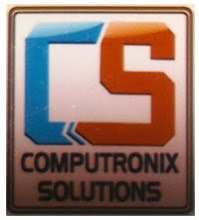One thing that people often get confused with is the difference between "Contra-Rotation" and "Counter-Rotation". The terms are used incorrectly more than you could possibly imagine in books, manuals, and on web sites. I wanted to take this opportunity to clear up the difference between the two.
As you can see by the first diagram, "Counter-Rotation" is where there are two individual shafts driving two propellers or rotors in different directions. Although we have chosen to show this example on a CH-47 Chinook from a top view, it is exactly the same on a twin engine airplane that has one propeller turning one way, and one turning the opposite way (Like on a P-38 "Lightning"). Sometimes, as in the case of the CH-47, the rotors will mesh, so the synchronization of the systems is crucial.
On airplanes, where the propellers do not mesh it is not as critical that the systems are in synch. In an airplane, if the systems are out of synch, it can put undue stress on the airframe, and cause harmonic vibrations throughout the airframe. You can usually hear an airplane that has the engines out of synch, as it will make a varying strobe like sound.
Each propeller in an airplane counter rotating system has its own set of mechanical controls to vary the pitch of the blades. Often it is a hydraulic system, but in some cases (Like the P-38), other means can be employed such as electric power. In a helicopter, both rotors are manipulated by one set of controls for the pilot.
contra-rotation
"Contra-Rotation" is where the propellers or rotors are mounted "Co-Axially", meaning one in front of (or on top of) the other on the same axis. Usually, the drive mechanism is a single source, but the direction of rotation is spilt by a gearbox to drive the two systems in opposite directions. This is usually done to reduce the "P" factor or "torque" in a turn. While we have chosen to show this example in the form of a Royal Navy Fairey Gannet, it also applies to helicopters (Like on the Soviet "Hokum").
The main use for this on a helicopter is that it negates the need for a tailrotor (Anti-torque rotor) to maintain directional control at a hover. It also tends to relieve some of the effects of retreating blade stall as both sides of the aircraft have advancing rotor blades.
In an airplane, one set of controls will adjust the pitch of both propellers at the same time. Usually, it is done by varying hydraulic pressure in the propeller hubs. In a helicopter, both rotors are manipulated by a single set of pilot controls as well, but two sets of control tubes working off of two alternately rotating swashplates are needed to adjust the rotors at the individual hub.
Saturday, February 13, 2010
Subscribe to:
Post Comments (Atom)

Are these considered two different types of helicopter?
ReplyDelete